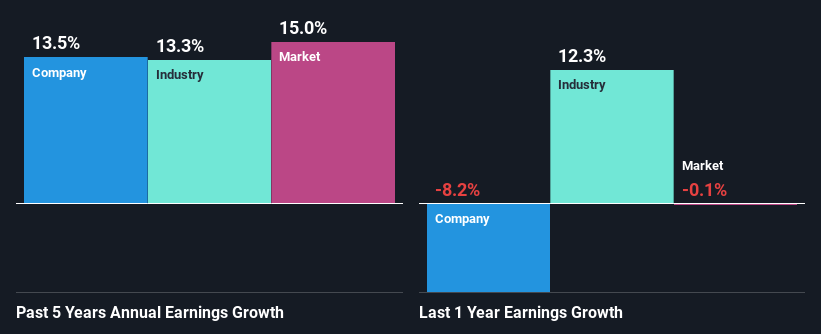Most readers would already be aware that ARB’s (ASX:ARB) stock increased significantly by 18% over the past three months. Since the market usually pay for a company’s long-term fundamentals, we decided to study the company’s key performance indicators to see if they could be influencing the market. Specifically, we decided to study ARB’s ROE in this article.
ROE or return on equity is a useful tool to assess how effectively a company can generate returns on the investment it received from its shareholders. In simpler terms, it measures the profitability of a company in relation to shareholder’s equity.
Check out our latest analysis for ARB
How To Calculate Return On Equity?
Return on equity can be calculated by using the formula:
Return on Equity = Net Profit (from continuing operations) ÷ Shareholders’ Equity
So, based on the above formula, the ROE for ARB is:
15% = AU$92m ÷ AU$636m (Based on the trailing twelve months to December 2023).
The ‘return’ is the income the business earned over the last year. So, this means that for every A$1 of its shareholder’s investments, the company generates a profit of A$0.15.
What Is The Relationship Between ROE And Earnings Growth?
Thus far, we have learned that ROE measures how efficiently a company is generating its profits. Depending on how much of these profits the company reinvests or “retains”, and how effectively it does so, we are then able to assess a company’s earnings growth potential. Generally speaking, other things being equal, firms with a high return on equity and profit retention, have a higher growth rate than firms that don’t share these attributes.
A Side By Side comparison of ARB’s Earnings Growth And 15% ROE
At first glance, ARB seems to have a decent ROE. Further, the company’s ROE compares quite favorably to the industry average of 12%. Probably as a result of this, ARB was able to see a decent growth of 14% over the last five years.
As a next step, we compared ARB’s net income growth with the industry and found that the company has a similar growth figure when compared with the industry average growth rate of 13% in the same period.
Earnings growth is an important metric to consider when valuing a stock. The investor should try to establish if the expected growth or decline in earnings, whichever the case may be, is priced in. Doing so will help them establish if the stock’s future looks promising or ominous. One good indicator of expected earnings growth is the P/E ratio which determines the price the market is willing to pay for a stock based on its earnings prospects. So, you may want to check if ARB is trading on a high P/E or a low P/E, relative to its industry.
Is ARB Making Efficient Use Of Its Profits?
With a three-year median payout ratio of 50% (implying that the company retains 50% of its profits), it seems that ARB is reinvesting efficiently in a way that it sees respectable amount growth in its earnings and pays a dividend that’s well covered.
Moreover, ARB is determined to keep sharing its profits with shareholders which we infer from its long history of paying a dividend for at least ten years. Our latest analyst data shows that the future payout ratio of the company over the next three years is expected to be approximately 55%. Therefore, the company’s future ROE is also not expected to change by much with analysts predicting an ROE of 17%.
Summary
Overall, we are quite pleased with ARB’s performance. In particular, it’s great to see that the company is investing heavily into its business and along with a high rate of return, that has resulted in a sizeable growth in its earnings. With that said, the latest industry analyst forecasts reveal that the company’s earnings growth is expected to slow down. To know more about the company’s future earnings growth forecasts take a look at this free report on analyst forecasts for the company to find out more.
Have feedback on this article? Concerned about the content? Get in touch with us directly. Alternatively, email editorial-team (at) simplywallst.com.
This article by Simply Wall St is general in nature. We provide commentary based on historical data and analyst forecasts only using an unbiased methodology and our articles are not intended to be financial advice. It does not constitute a recommendation to buy or sell any stock, and does not take account of your objectives, or your financial situation. We aim to bring you long-term focused analysis driven by fundamental data. Note that our analysis may not factor in the latest price-sensitive company announcements or qualitative material. Simply Wall St has no position in any stocks mentioned.


















